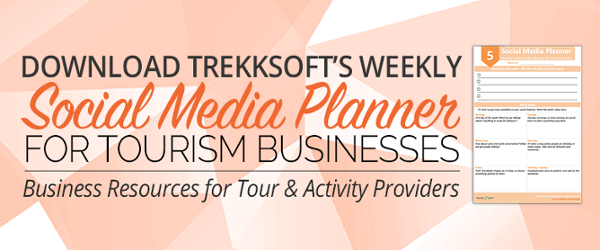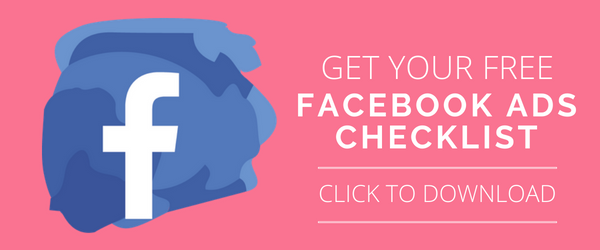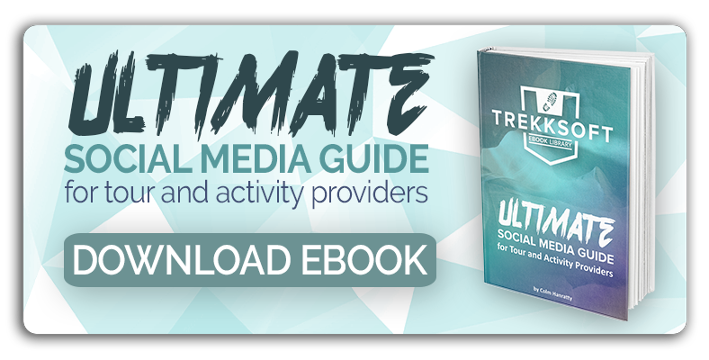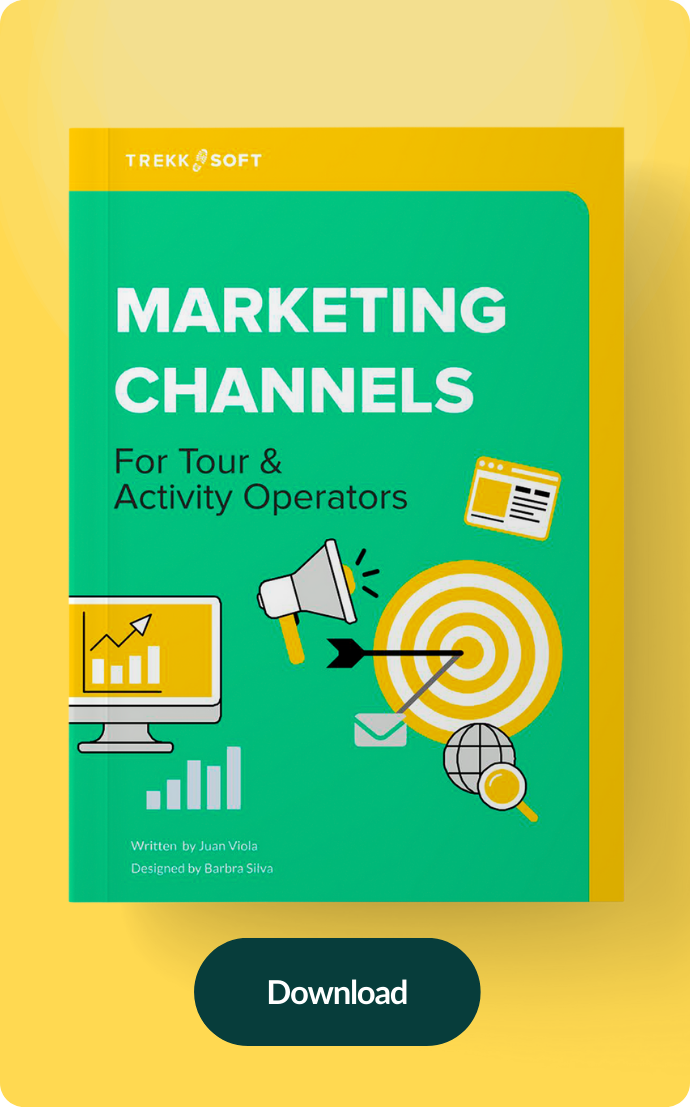Since travel content is so widely shared on Facebook (who doesn’t want to show their friends where they’re travelling?) having a presence as a tour or activity company is an integral part of your marketing strategy. But what people want to know is how to sell with Facebook.
Here are 10 ways to use the world’s number one social network to sell your product.
1. Have a strategy
There’s no point being on Facebook if you don’t have a strategy. This can be an 80-page document or simply a one-pager. Your social media strategy should include:
- Your target customer and customer personas
- Your social media goals that lead to brand awareness, conversions or booking (e.g. post views, engagement, click-through-rates)
- A clear owner of your brand's social media strategy
- An audit of what's working and what isn't. A good rule of thumb is to create more visual and easy-to-digest content. If you're sharing long-form articles or blog posts, pull out a quote or two to use in your captions.
- A content calendar and content you plan to share with your audience. Having a regular posting schedule can help you figure out what's working and what isn't. Create a schedule that is manageable and gives you time to engage with your followers. This could be posting once a day or a few times a week, and setting aside 15 or 20 minutes a day to respond to any comments or messages you might have.
2. Have the right type of page
This might seem obvious, but the number of businesses that have Facebook accounts that have ‘friends’ and not ‘likes’ is startling. If you’re one of these businesses, you need to migrate your page from a ‘profile’ to a ‘page’.
With a Facebook page, you'll get access to Insights where you can get more information about how your posts are performing, including stats like Reach, Likes and Reactions, Link clicks and so on.
This data can give you a better idea of what your audience responds to, and help direct content creation for future posts.
You can learn more about creating and managing your Facebook pages here.
3. Use great pictures
As a tour and activity operator online, your goal is to attract your ideal customers to check you out, check out your tours, and convince them that you're the perfect operator for their next trip.
While you don't always need a professional photographer to capture your tours (though this is recommended if you have the budget for it), you definitely can't get away with grainy or blur pictures that don't tell a story. It's even worse if you're sharing stock images on your social media accounts.
One way around this is to get your team involved in taking pictures during a tour and uploading it to a shared company drive. You could also ask customers to share their photos with you and get their permission to share it on your social media pages. User generated content often conveys authenticity and gives potential customers a glimpse into the experience you could offer them too.
Lastly, if you know someone in your network who takes good pictures, consider asking them to help you capture a few shots in exchange for a free tour or three.
4. Use Facebook's Business Suite to understand your audience
In June 2021, Facebook got rid of Audience Insights, arguably one of the most useful tools businesses could use when creating Facebook ads. Instead, businesses can now use Facebook's Business Suite to get data for both your Facebook page and Instagram account.
Page insights shows you how people are interacting with your page, showing you which posts or ads performed well, and which didn't. The Audience Insights for your page also shows you how your social media following is progressing over time, the age and gender breakdown of your followers, and the top cities and countries your followers come from.
These insights offer businesses an indication of whether they're attracting the right audience. For example, if the ideal customer for your wine tour company are American families with older children, you would want to see a majority of your followers between 40 to 60 years old, living in America. Your content should not be attracting 20 year old Norwegians, for example.
5. Try Facebook advertising
Facebook’s advertising platform can be tricky, but it’s a necessary tool for any 21st century marketer. For a long time Facebook has employed a ‘pay to play’ strategy, meaning you'll need at least a quarter of a million page likes to see any traction. Alternatively, you're going to have to pay them to show your content to a larger audience.
But the great thing is that you can experiment for as little as €4. If you decide to experiment with ads, make sure you spend a bit of time developing your ad audience and marketing message. The last thing you want to do is spend €4 serving a piece of content to the wrong group of people.
Read our tips for launching your first Facebook advertising campaign here.
6. Make the most of Messenger Bot
Facebook Messenger is a great way for customers to get in contact with you to learn more about the services you offer. However, manually responding to every single query at all hours of they day can be a time consuming task.
We recommend you set up a chatbot so that your potential or existing customers can have an automated conversation with you. Essentially, it's a series of options people can choose to help them book a tour, send an enquiry, retrieve a booking, or ask a common question.
Learn how to set up your Messenger Bot here.
7. Experiment with video
If you use Facebook a lot, you’ll have noticed the almost constant stream of videos in your feed. This is because they play automatically, so whether or not the user wants to consume your content, they’re consuming it. If it’s good enough, they’ll continue to consume it until the end, thus receiving your message.
There are many online tools available today that can help you cut and edit videos. Canva offers a simple video editing tool now, and apple users can use iMovie for basic video editing too.
8. Experiment with Facebook Live
Video is key to marketing on Facebook and Facebook's release of Facebook Live proves this. Their video-streaming facility allows you to stream video live from any event or a place, with a click of a button.
The video is first shared in real-time, with users being told your page ‘is live’. It then stays on your page for the following hours and days with users being told your page 'was live'. So while a video might only have less than 20 live viewers at time of broadcast, within a day of the video being shared, you should find that it ends up with well over 1,000 views, depending on the size of your audience.
9. Add a Book Now button to your page
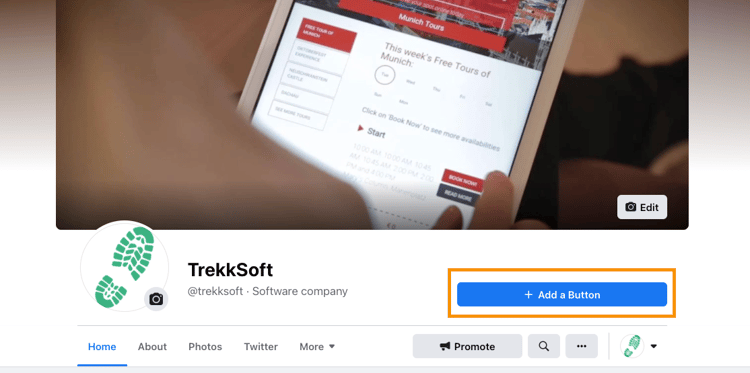
While you can't integrate the booking system to your Facebook page, you can add a link to your most popular tour(s) at the top of your Facebook page. It's a clever way to signal to your viewers that you're open for business and that they can easily book a tour with your online.
10. Optimise your page
What’s the number one search term you’d like to show up for in Google? ‘Walking tours in Istanbul’ maybe? Or is it ‘Skydiving in Sydney’? Whatever it is, make sure those keywords are on your Facebook page in the 'About' section.
While you’re at it, make sure you optimise the tabs available. Try to have your reviews prominent, share content in other languages to relevant audiences and be meticulous when it comes to grammar – nothing looks worse than a spelling mistake.
For more social media tips, get your free social media handbook and accelerate your strategy in less than an hour:
This post has been updated in July 2021 for relevance.

